Mild temperatures in the fall and winter, combined with a lack of precipitation in the form of snow, led to a large deficit in the snow water equivalent (the amount of water stored in the form of snow), for the second year in a row. We discuss this with Francesco Avanzi, researcher in our Hydrology and Hydraulics Department
Once again, little snow in the Alps at the moment. The images of ski slopes reduced to miserable strips of artificial snow are not just a sign of problems for tourism: in fact, the scarcity of precipitation in the form of snow in the Alps can also be a serious problem in terms of water resource management, because they mean that water supply represented by snow is in short supply.
The snow condition that opens this 2023 is far from good, even more so considering that, as we have had occasion to mention on several occasions (for example, here and here), there was already a significant deficit of snowfall in our country last year. In the Alps, glaciers and snowfields act as a reservoir for the water that feeds the Po River basin, storing it with winter snowfall and then supplying it downstream during the spring melt, when it is most needed for crops. The current scarcity of snow on these mountains implies, therefore, the risk of a water shortage in the coming months. But how serious is this deficit at the moment?
We have to keep in mind that possible snowfall in the coming months may partially make up the shortfall. Still, data collected by our researchers suggest that the deficit is quite significant. The water stored in snow, described by a parameter called snow water equivalent (SWE), is in fact about 69% less, on a national scale, than in the past eleven years- even 29% less than in 2022, a year that also marked a historic deficit.
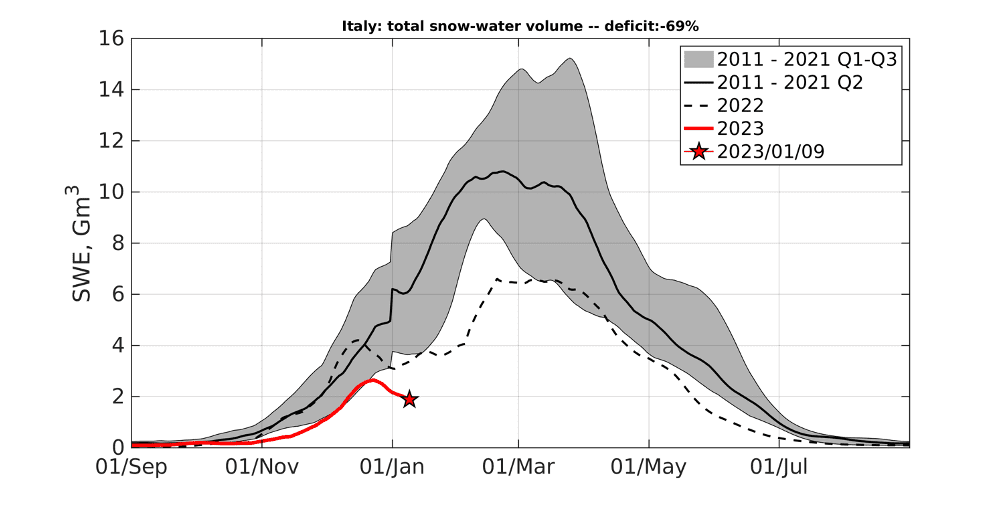
“This scarcity of snow can be explained by high temperatures, both in the fall and in the last months of last year, which led first to a delay in the snow season and then to an early melting of the little snow present at the time,” says Francesco Avanzi, researcher in the Hydrology and Hydraulics Department of CIMA Research Foundation. “Moreover, early snowmelt could significantly reduce the water available in spring and summer: therefore, to compensate for this possible water shortage, more abundant precipitation than the seasonal average would be needed in the coming months.”
This situation affects both the Alps – especially important for their role in supplying water to the Po River basin – and, to an even greater extent, the Apennines. In Marche, Abruzzo and Molise Regions, in fact, snow water equivalent is estimated to be 97%, 84% and 92% lower, respectively, than the average of the past 11 years. “However, in general the Apennine areas receive most of their snow in the last months of winter. Such significant deficits, however, are difficult to fill completely,” Dr Avanzi further explains.
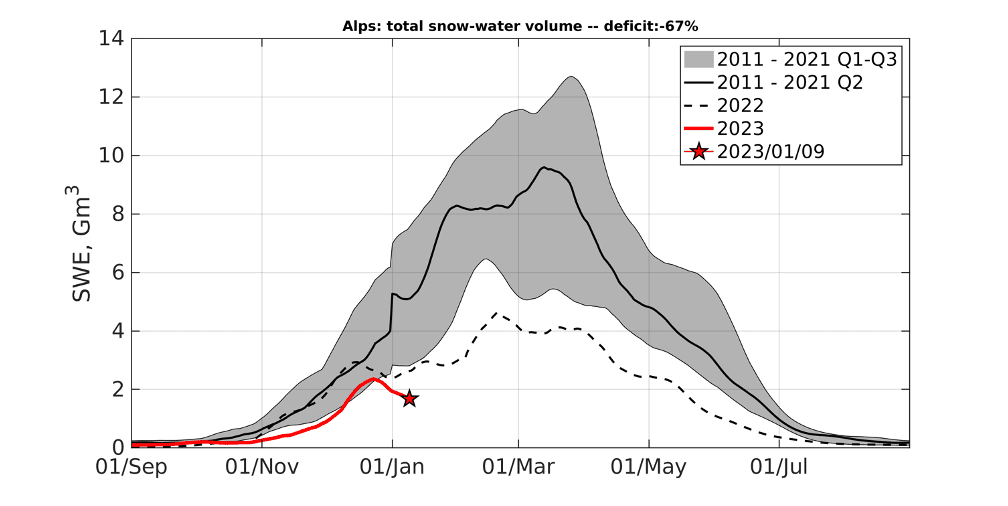
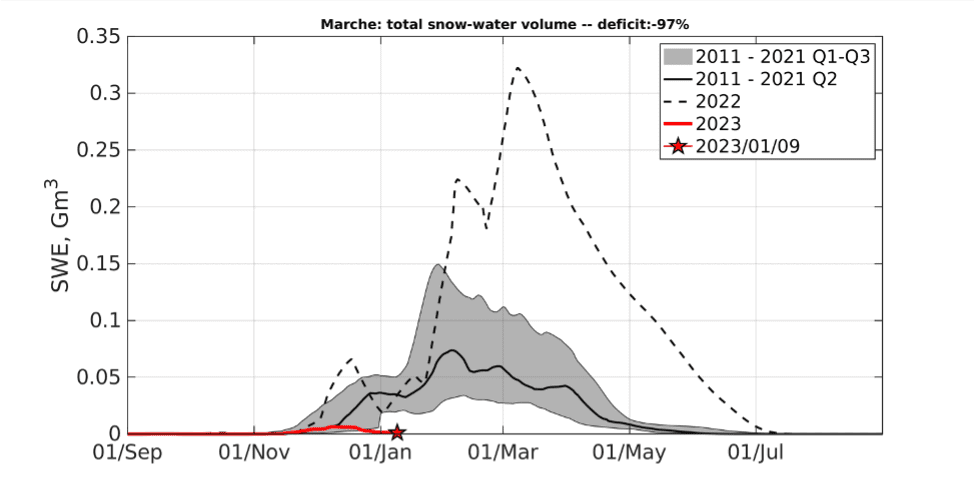
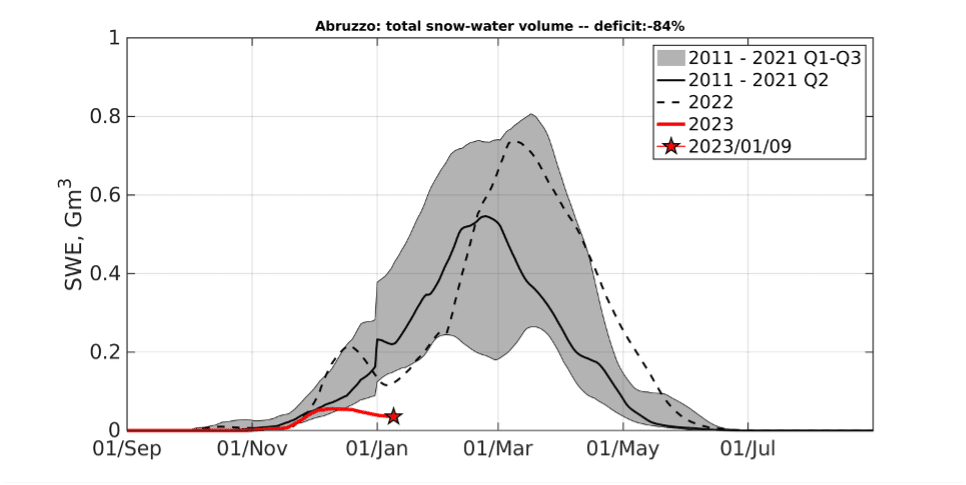
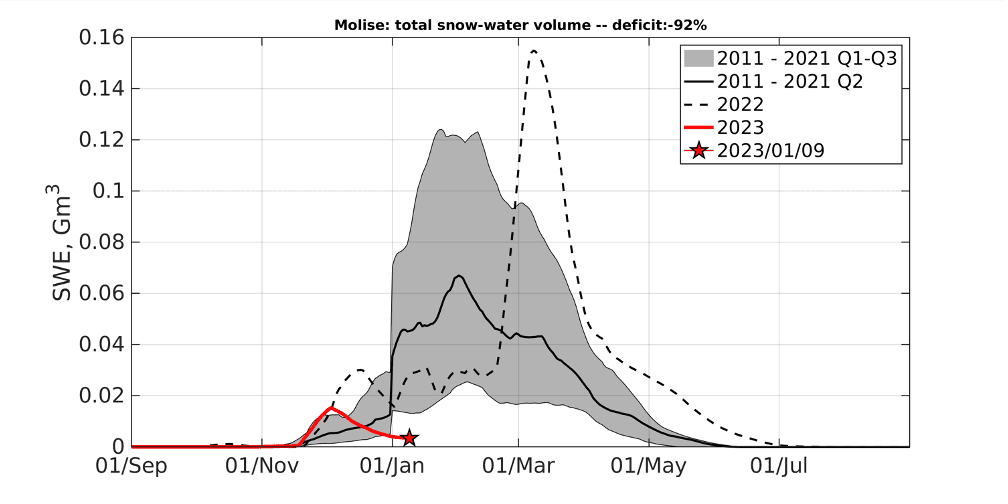
Assessments of the current situation are based on two tools developed by CIMA Research Foundation. One is the S3M, which allows describing the evolution of snowpack and glaciers over time and is coupled with a hydrological model, so it can also be used to describe water availability scenarios. The second tool is IT-SNOW, a reanalysis of snow conditions over the national territory obtained by integrating both data from ground-based networks and data from satellites, so that historical estimates are available for a more contextual assessment of the situation and are consistent for all of Italy.
“Overall, what emerges from our assessments is a serious snow deficit, which we can quantify at about 4 billion m3 of water,” Dr Avanzi concludes. “This scarcity of snow may translate into a series of medium- and long-term consequences, which affect winter tourism, but also agriculture in spring and summer, and again, for example, the health of glaciers, which are already in steady decline and to which snow provides protection against melting. Unfortunately, we cannot consider this situation as a surprise, because it is consistent with the impact of climate change and its effect on weather phenomena, altering, among other things, the precipitation regime. Scenarios carried out by CIMA Research Foundation for Liguria, Val d’Aosta and Marche Regions suggest a strong reduction in snowfall between now and the next decades.”
